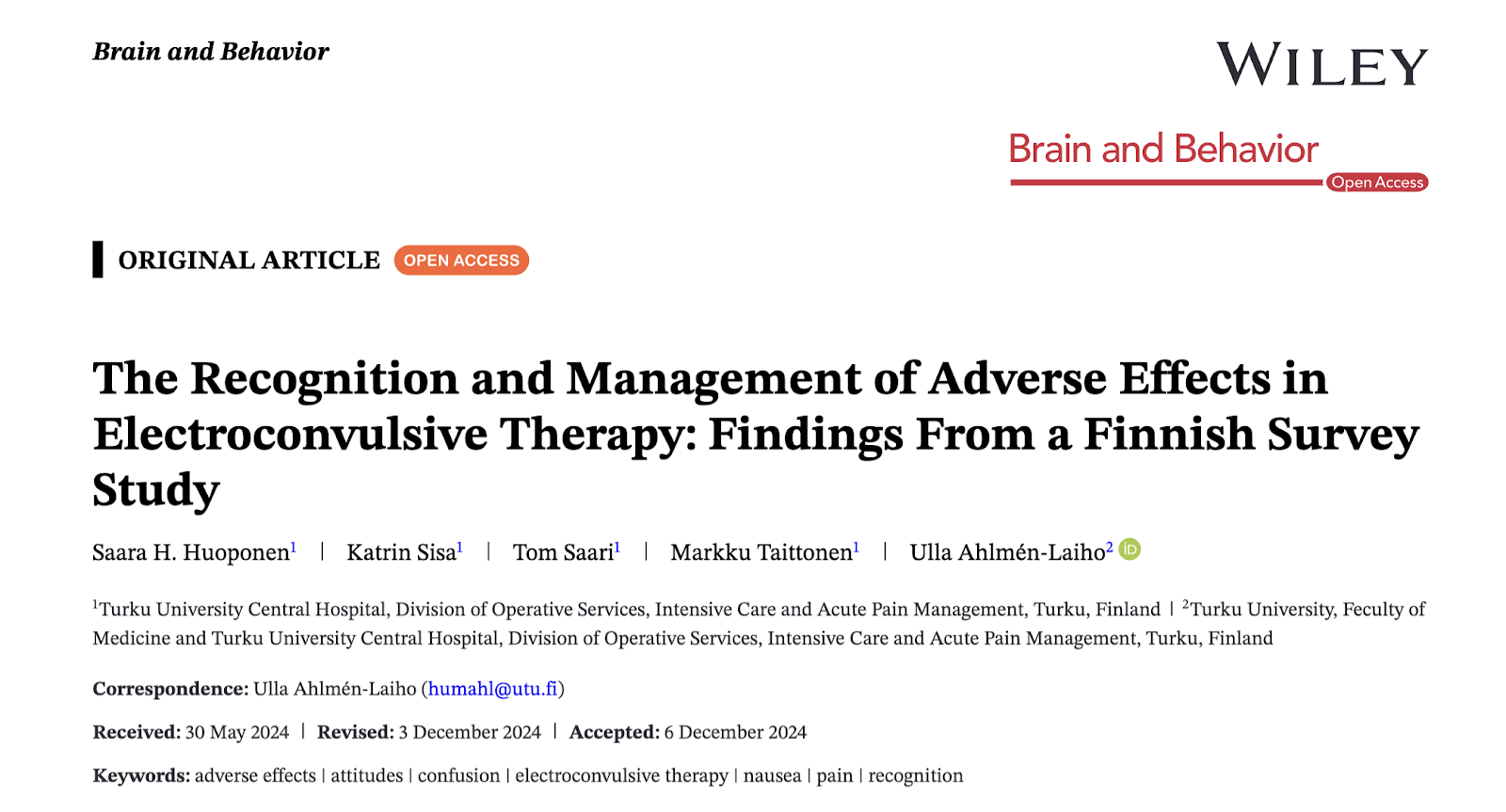Optimizing ECT With E-Field Modeling: A Narrative Review in JECT

Out on PubMed, from authors in China and the US, is this article: Optimizing Electroconvulsive Therapy With E-Field Modeling: A Narrative Review. Ren C, Kung S, Croarkin PE, Opitz A, Forester BP, Hermida AP, Mueller M, Pagali SR, Petrides G, Seiner SJ, Yoon IA, Lapid MI. J ECT. 2025 Jan 24. doi: 10.1097/YCT.0000000000001111. Online ahead of print. PMID: 39853304 The abstract is copied below: Electroconvulsive therapy (ECT) is an effective treatment for severe depression, especially in treatment-resistant cases. However, its potential cognitive side effects necessitate careful dosing to balance therapeutic benefits and cognitive stability. Recent advances in electric field (E-field) modeling offer promising avenues to optimize ECT dosing. This review synthesizes current knowledge on E-field modeling in ECT and explores its clinical applications. It examines the variability in E-field strengths and distributions induced by ECT and their impact on clinical outcomes. Additionall...











